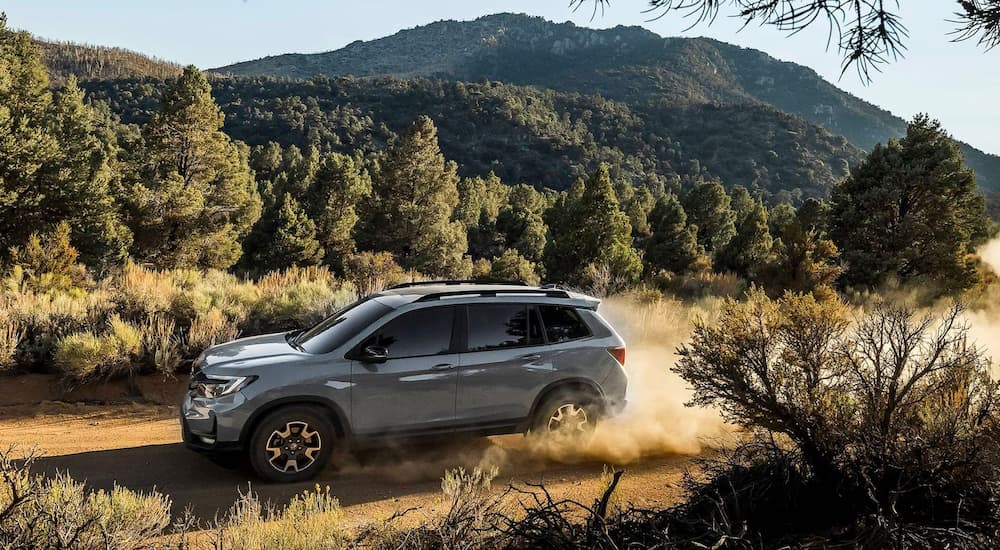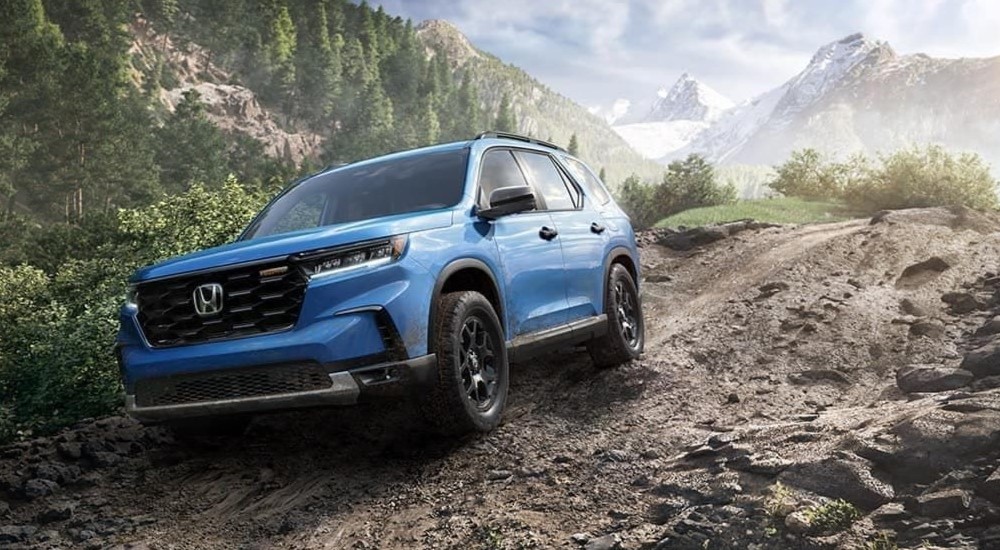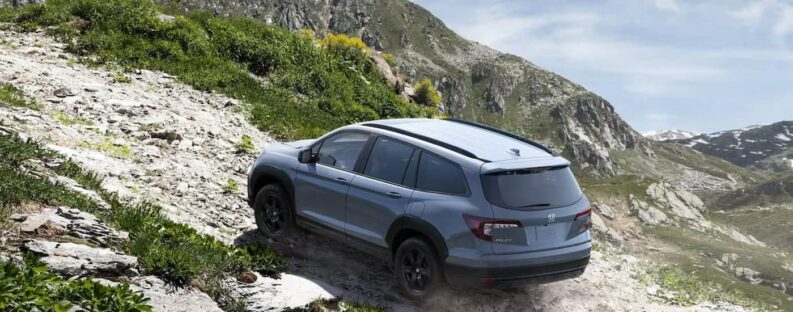The Honda brand is known for a few things: making reliable vehicles that drivers can depend on for many years, offering affordable models in a range of styles, and delivering impressive performance with efficient engines. What you may not know is that Honda also offers one of the most advanced all-wheel drive (AWD) options on the market: the Intelligent variable torque management (i-VTM4) system. You’ll only find three models at your nearest Honda dealer equipped with this system, but it’s well worth understanding what it is and how it works.
Whether you’re shopping for a Honda right now or simply like to know how different tech works, the i-VTM4 AWD system is a marvel and one of the more impressive offerings on the market. Let’s take a look at the history of this technology and how it’s been developed over the last couple of decades, and then we’ll dig into what it does and how it works. By the end of this, you’ll be an i-VTM4 expert and ready to discuss why your Honda Ridgeline handles better than a lot of other trucks out there.

The History of the i-VTM4 AWD System
Although the modern i-VTM4 system was introduced in 2015, its roots go back quite a bit further than that. The current system owes its origins to the development of two different systems, starting with the Active Torque Transfer System (ATTS) that Honda developed and introduced on the 1997 Prelude Type SH. This was a system that used a pair of electronically-controlled clutches designed to send up to 80% of engine torque to the outside wheel when cornering. Not only could it send more power to this wheel, but it would also overdrive that wheel by up to 15% (we’ll get into why this matters in a bit). Overall, it helped the front-wheel drive (FWD) Prelude Type SH handle better and improved turning.
Following this, Honda’s engineers developed their first Variable Torque Management four-wheel drive system, or VTM-4, and released it initially on the 2001 Acura MDX. This was followed by its use on the 2003 Honda Pilot, marking the first implementation of the VTM-4 system for a Honda model. This was an AWD system designed to distribute torque more evenly by using a pair of electromagnetic clutches on the rear axle. When the vehicle expected wheel slippage, the clutches would lock, and power would go to the rear wheels to help improve traction.
With these two systems, we can see the origins of the modern i-VTM4 system. The two previous technologies were first combined for the Super Handling AWD (SH-AWD) system introduced with the 2005 Acura RL in a way very similar to what Honda uses now. Honda’s version of the technology wouldn’t hit the road until the release of the 2015 Pilot. Today, i-VTM4 AWD is standard on the Honda Ridgeline and Honda Passport and available on the Honda Pilot.

What Is the Honda i-VTM4 AWD System?
The simplest way to understand the i-VTM4 AWD system is that Honda essentially took its VTM-4 system from before and added the cornering functionality of ATTS to improve traction, stability, and handling. A Honda equipped with i-VTM4 AWD has a torque-transfer unit mounted at the front of the vehicle and a pair of hydraulically-operated clutch packs toward the back, one for each of the rear wheels. There’s an Electronic Control Unit (ECU) for the i-VTM4 system that monitors everything; when potential wheel slippage is detected, or the ECU otherwise decides it is needed, it can send power to the rear wheels. However, unlike your average AWD system, it can control each clutch independently to determine where the power should go.
Ultimately, the i-VTM4 AWD system can send up to 70% of engine torque to the rear wheels when it’s engaged; the rest of the time, the Honda drives like an FWD model. In addition, it can distribute up to 100% of that power to a specific rear wheel, right or left. That’s the beauty of having two separate clutches for the rear wheels. When the vehicle’s ECU decides where the power needs to go, it can split that engine torque between the rear wheels evenly, give one more than the other, or send it all to one of the rear wheels and not the other. What does this actually mean for you if you’re driving a Honda with the i-VTM4 AWD system? Well…
Improved Performance Off-Road
First and foremost, this system is perfect for going off-road or dealing with nasty weather. The torque vectoring allows it to send power to all four wheels as needed, making real-time adjustments as conditions change or things get rough. Say you’re on a slushy road and trying to accelerate from a stop—the ECU can send extra power to the rear wheels to help get you going and favor one wheel over the other if one has more grip. Similarly, if you’re off-road and one of your rear wheels has lifted up off the ground due to uneven terrain, it’ll simply send all that torque to the other rear wheel to give you the boost you need to keep going.
Perhaps even more impressive than this basic functionality is the fact that Honda has designed the i-VTM4 system to work with the Intelligent Traction Management system its vehicles have. This lets you choose between four different modes at the push of a button, including Normal, Snow, Mud, and Sand. Choose Normal for balanced performance that prioritizes torque to the wheels with the most traction. Picking Snow increases rear torque to improve launch stability. Finally, Mud and Sand trigger a rear-torque bias that splits power evenly between the rear wheels.

Improved Handling Overall
One of the best parts about how the i-VTM4 system has been designed is that it functions all the time, not just during the winter months or when you go off-road. Remember earlier when I talked about ATTS and overdriving the wheels? Well, the modern i-VTM4 system can do pretty much the same thing by sending more power to the rear wheels while cornering. Basically, FWD systems put a lot of strain on the front wheels since those wheels handle steering, support a lot of the vehicle’s weight, and deliver power to move forward—all of this can result in a loss of traction and produce understeer.
On the other hand, rear-wheel drive models can experience oversteer, making them feel more nimble in the right hands or causing them to lose traction and spin out when an inexperienced driver tries to do something they can’t handle. Since AWD systems send power to both the front and rear of the vehicle, they can avoid these situations and improve stability at the cost of some nimbleness. This often makes them feel less agile than other vehicles.
The use of torque vectoring by the i-VTM4 system allows it to send more power to the outside rear wheel when cornering—overdriving the rear axle by 2.7%—making that wheel spin faster than the two front wheels. This takes some of the work off the front wheels, reducing understeer to make the steering feel more balanced overall. Distributing the cornering load more evenly across the front and rear tires also helps improve cornering grip, resulting in better handling and turning even on dry roads.
What Does This Mean for a Honda Driver?
In the end, this is all to say that i-VTM4 helps improve performance and responsiveness whether you are dealing with a snowstorm, enjoying some time on the trail, or simply going about your daily routine. It’s one of the details that set the Honda Ridgeline apart from other midsize trucks and helps make it a fantastic option for going off-road. Anyone shopping for a midsize SUV should also strongly consider choosing a model with i-VTM4 to get the best driving experience possible, especially if you live somewhere with rough winters. This system showcases the impressive dedication to performance and exceptional engineering that Honda has demonstrated for decades, which is why the brand has earned so many fans who keep coming back to see what Honda will cook up next.

